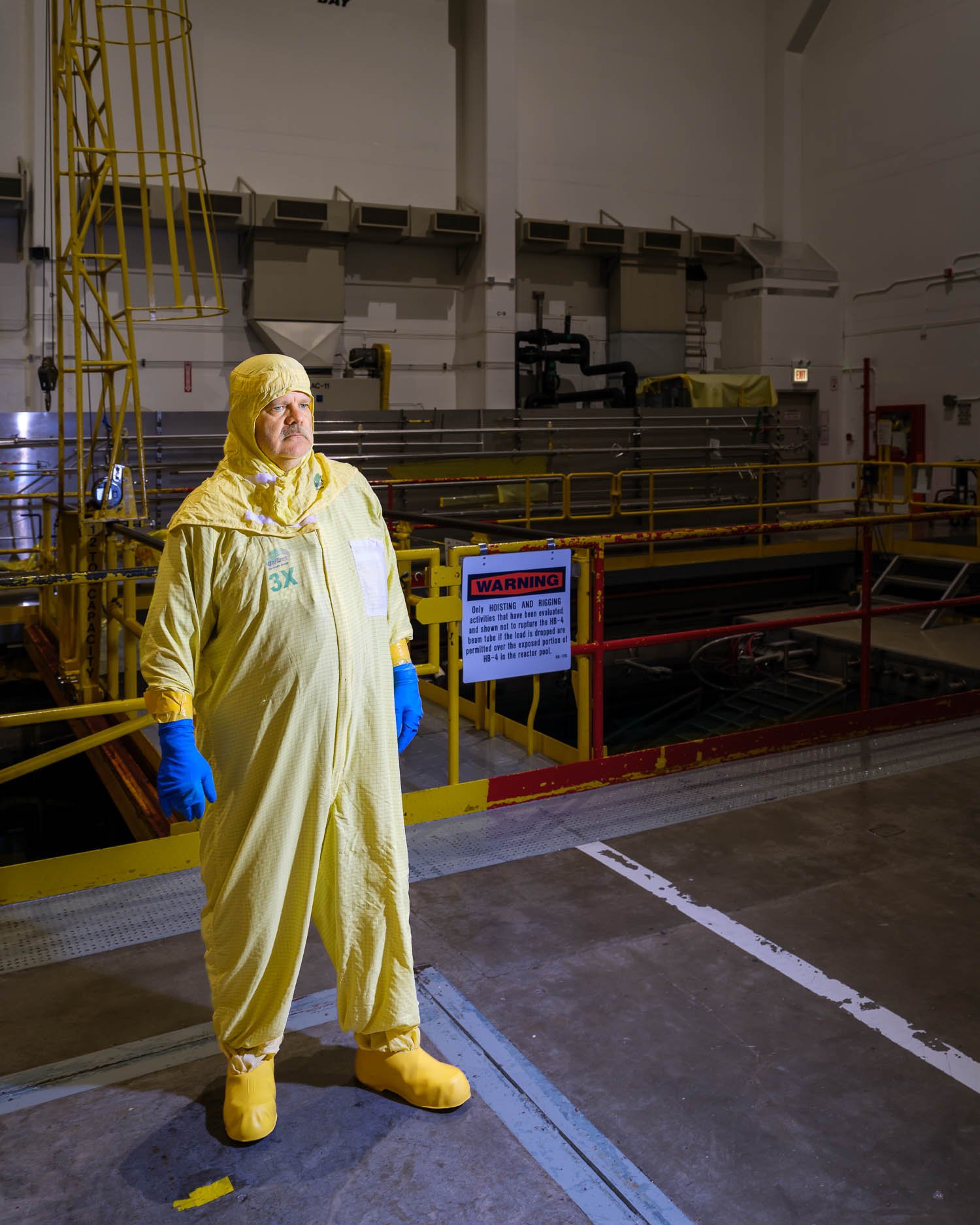Oak Ridge National Laboratory (ORNL) in Tennessee was born in 1943 as a top-secret part of the Manhattan Project, tasked with refining radioactive material for atomic bombs. A town was built in record time and became known as "The Secret City" because only those living there knew it existed. The population of 75,000 had no idea they were working on the atomic bomb until it was dropped on Japan in 1945.
After the second world war, ORNL became a leading nuclear and energy research facility and is currently the largest science and energy national laboratory in the Department of Energy system. ORNL has several of the world's top supercomputers, including Frontier, the world's fastest.
At ORNL, the same machines designed to create bombs that could kill more humans than ever before were turned to the production of medical isotopes that have saved millions of lives. ORNL represents everything that is terrifying, audacious and contradictory about nuclear science.
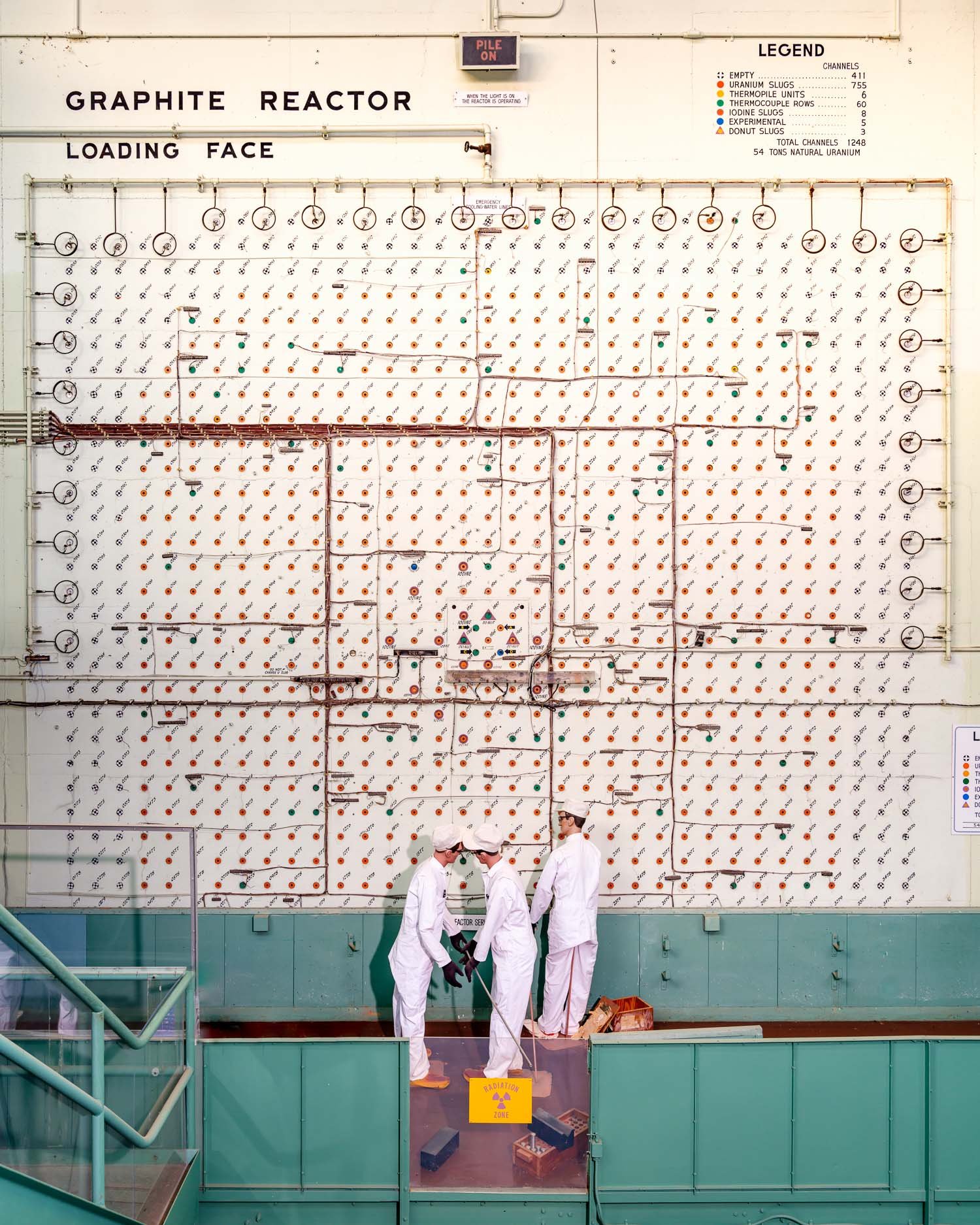
The oldest nuclear reactor in the world, the X-10 Graphite Reactor is considered the birthplace of Oak Ridge National Laboratory. The primary mission of the Graphite Reactor was to demonstrate the production of plutonium from uranium in a reactor for use in the first atomic weapons. Natural uranium fuel was created in the form of 1x4-inch slugs encapsulated in gas-tight cylindrical aluminium jackets. These were inserted by hand into horizontal channels in the graphite moderator, through the loading face (shown here) and pushed into position using long rods. During the 20 years the Graphite Reactor operated—from 1943 to 1963—it continued its pioneering role. It produced the first electricity from nuclear energy. It was the first reactor used to study the nature of matter and the health hazards of radioactivity. And for years after the war, it was the world's foremost source of radioisotopes for medicine, agriculture, industry, and other purposes.
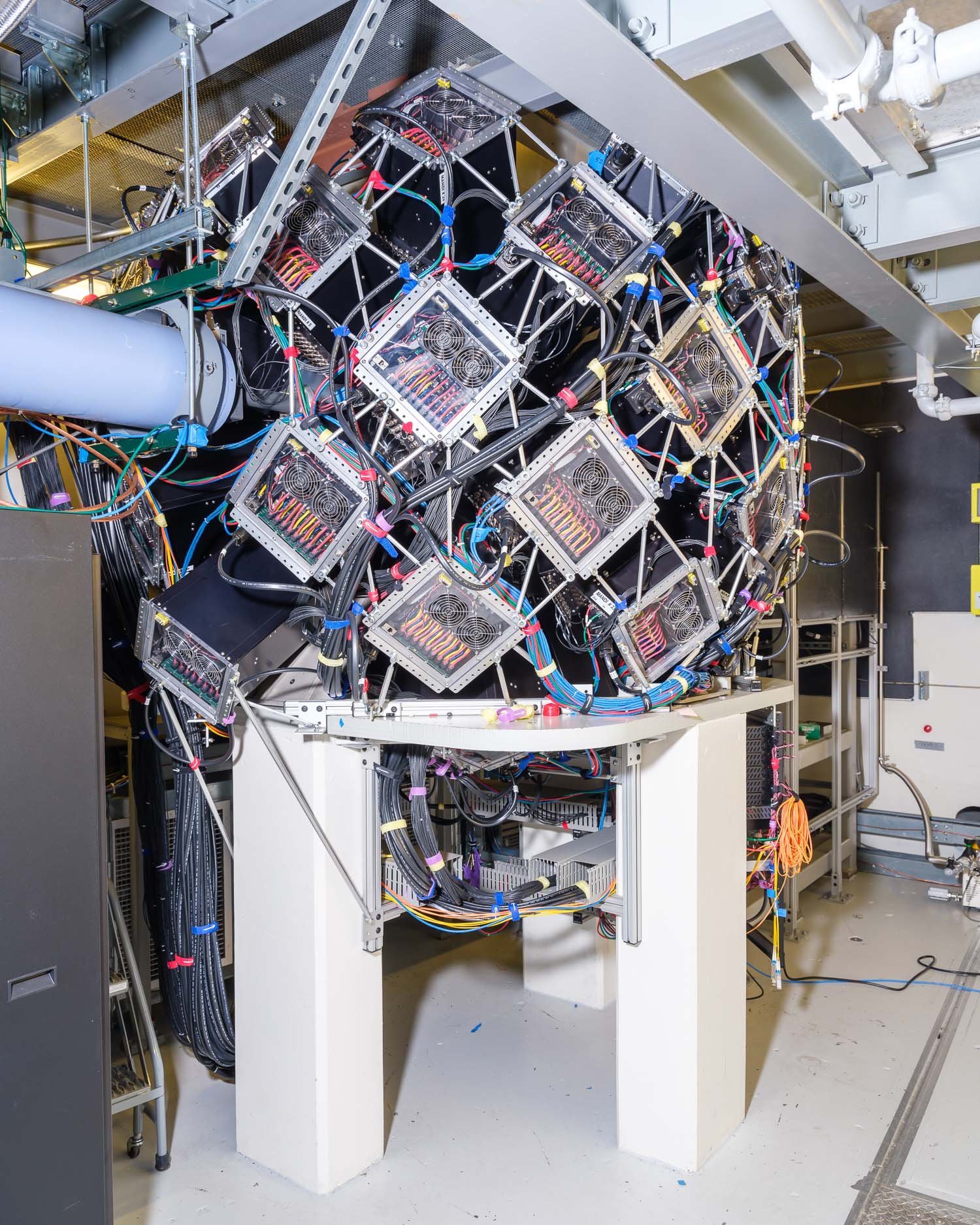
The macromolecular neutron diffractometer, called MaNDi, at the SNS facility at Oak Ridge National Laboratory is designed to study biological materials such as enzymes, protein drug complexes, and membrane proteins. The samples are lowered into the instrument and bombarded with beams of neutrons. As neutrons scatter off atoms in the sample, they are recorded by the spherical array of detectors to reveal the location of atoms and how they are arranged. During the COVID-19 pandemic, MaNDi was used to investigate the SARS-CoV-2 protease, the enzyme responsible for replicating the virus throughout the body. Insights were used to develop novel drug molecules to treat the deadly disease.
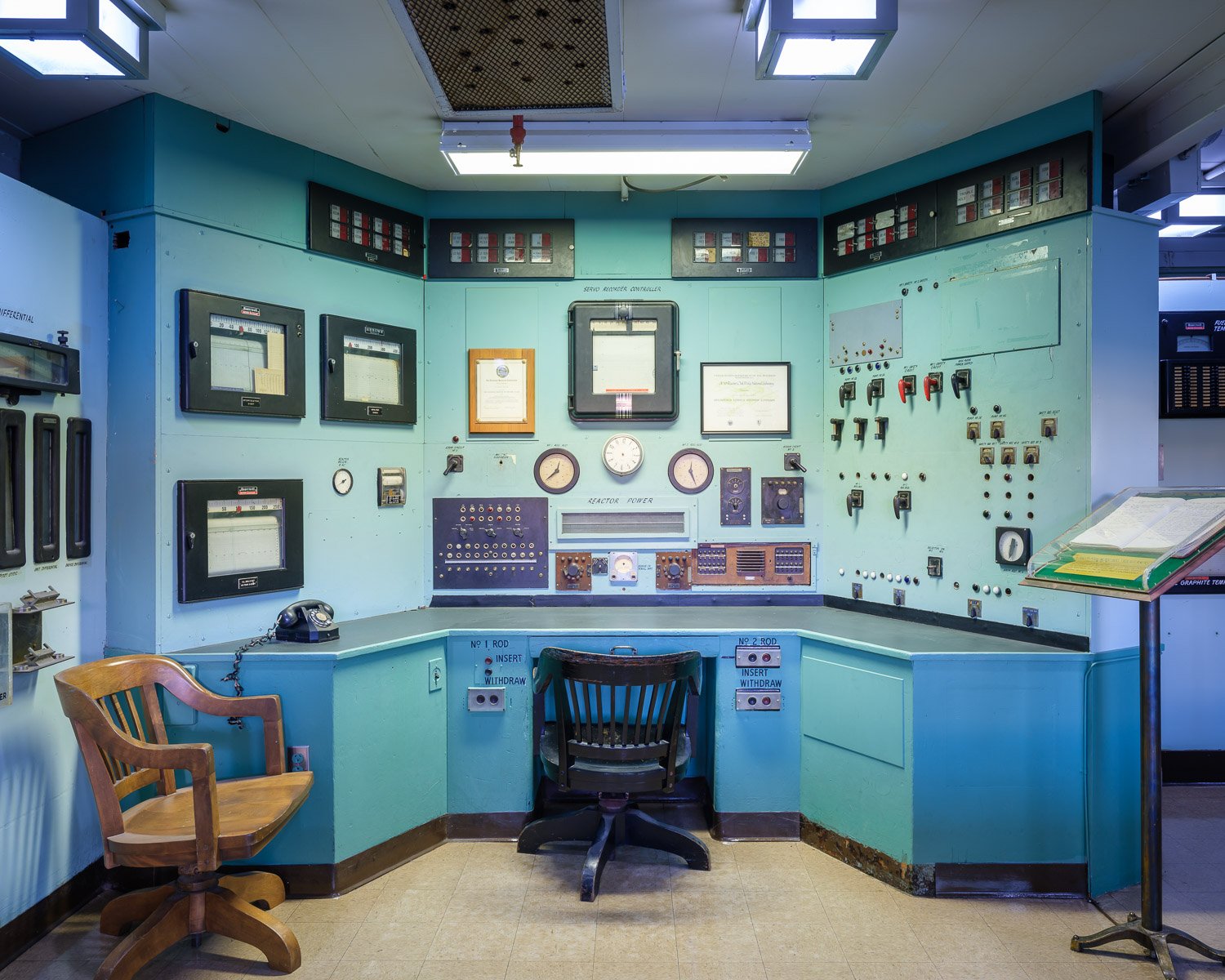
The control room of the oldest nuclear reactor in the world, the X-10 Graphite Reactor

Laboratory entrance
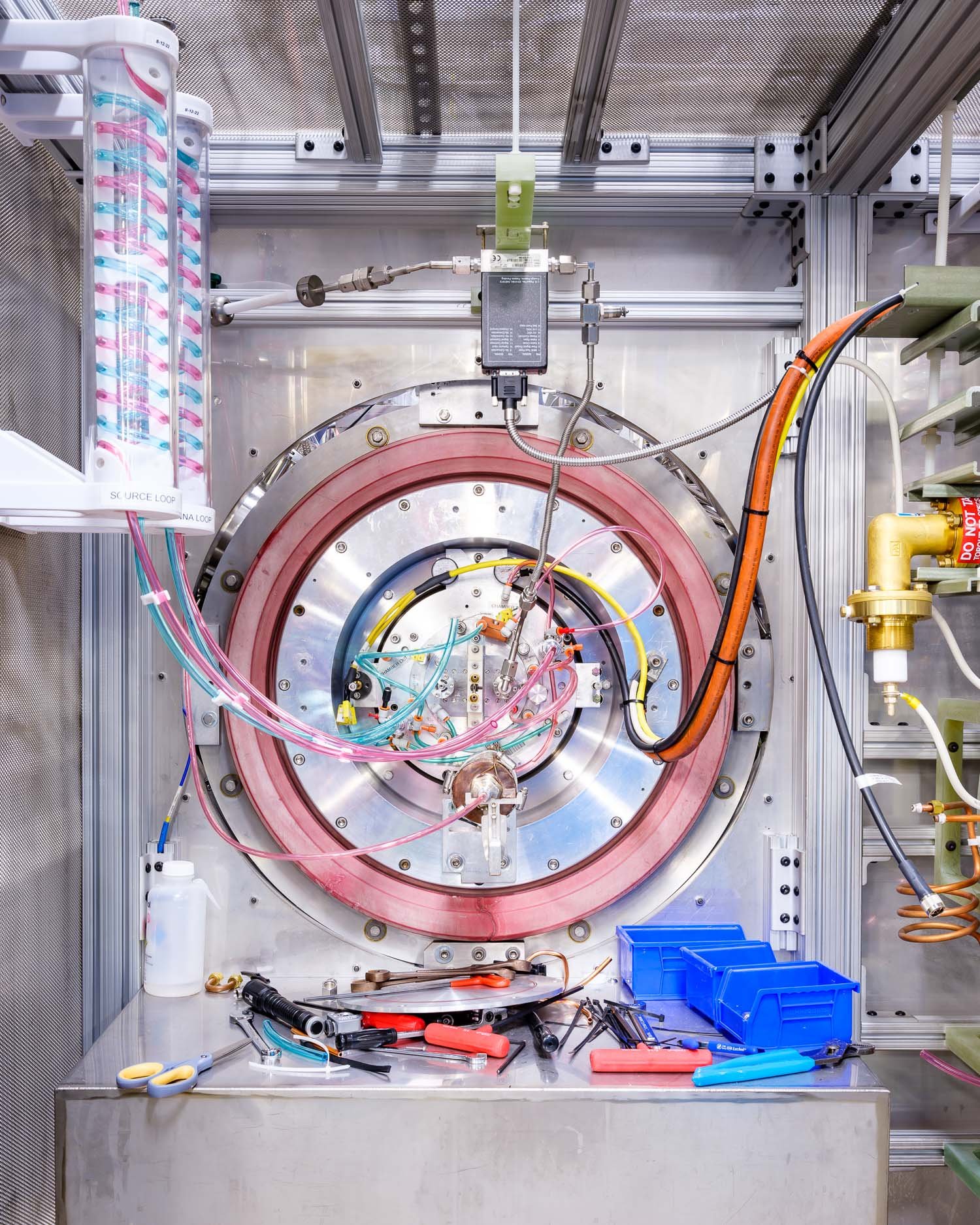
The Spallation Neutron Source (SNS) at the Oak Ridge National Laboratory (ORNL) is a particle accelerator with the world’s most powerful spallation source, providing intense neutron beams for scientific research and industrial development. Because neutrons have no electrical charge, they can easily pass through a sample of material without harming it, revealing information about the material’s structure and properties. The SNS front-end system includes an ion source, beam formation and control hardware, and low-energy beam transport and acceleration systems. The ion source, shown here, produces negative hydrogen (H-) ions—hydrogen with an additional electron attached—that are formed into a pulsed beam and accelerated to an energy of 2.5 million electron volts. This beam is delivered to a large linear accelerator.

The High Flux Isotope Reactor at the Oak Ridge National Laboratory (ORNL) is the most powerful reactor-based source of neutrons in the United States and is one of the nation’s top facilities in producing medical and industry-grade isotopes. The core of the reactor, measuring 2 feet tall and 15 inches in diameter, is submerged in a pool to provide cover from the neutrons and gamma rays. As well as producing isotopes for treating cancer and detecting explosives, Plutonium-238 produced at HFIR is used to power NASA space missions, used most recently in the Mars Perseverance Rover. ORNL’s High Flux Isotope Reactor stores spent fuel in pools to allow radiation levels to decay to a level safe to transport to a processing facility. The blue glow from freshly irradiated fuel is called Cherenkov radiation. This is electromagnetic radiation emitted when a charged particle passes through a dielectric medium at a speed greater than the phase velocity of light in that medium.
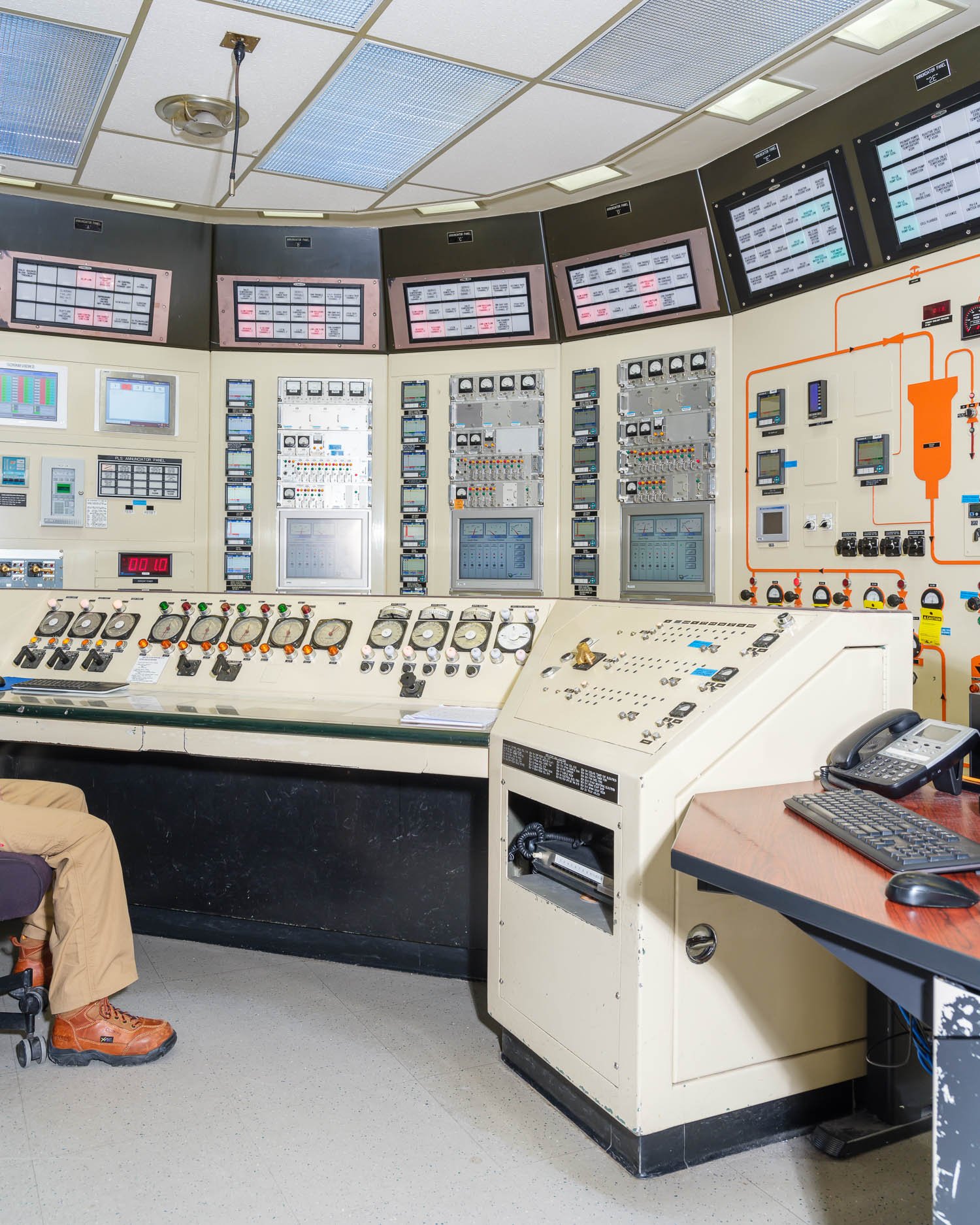
Control Room at The High Flux Isotope Reactor

Utility drain lines at ORNL
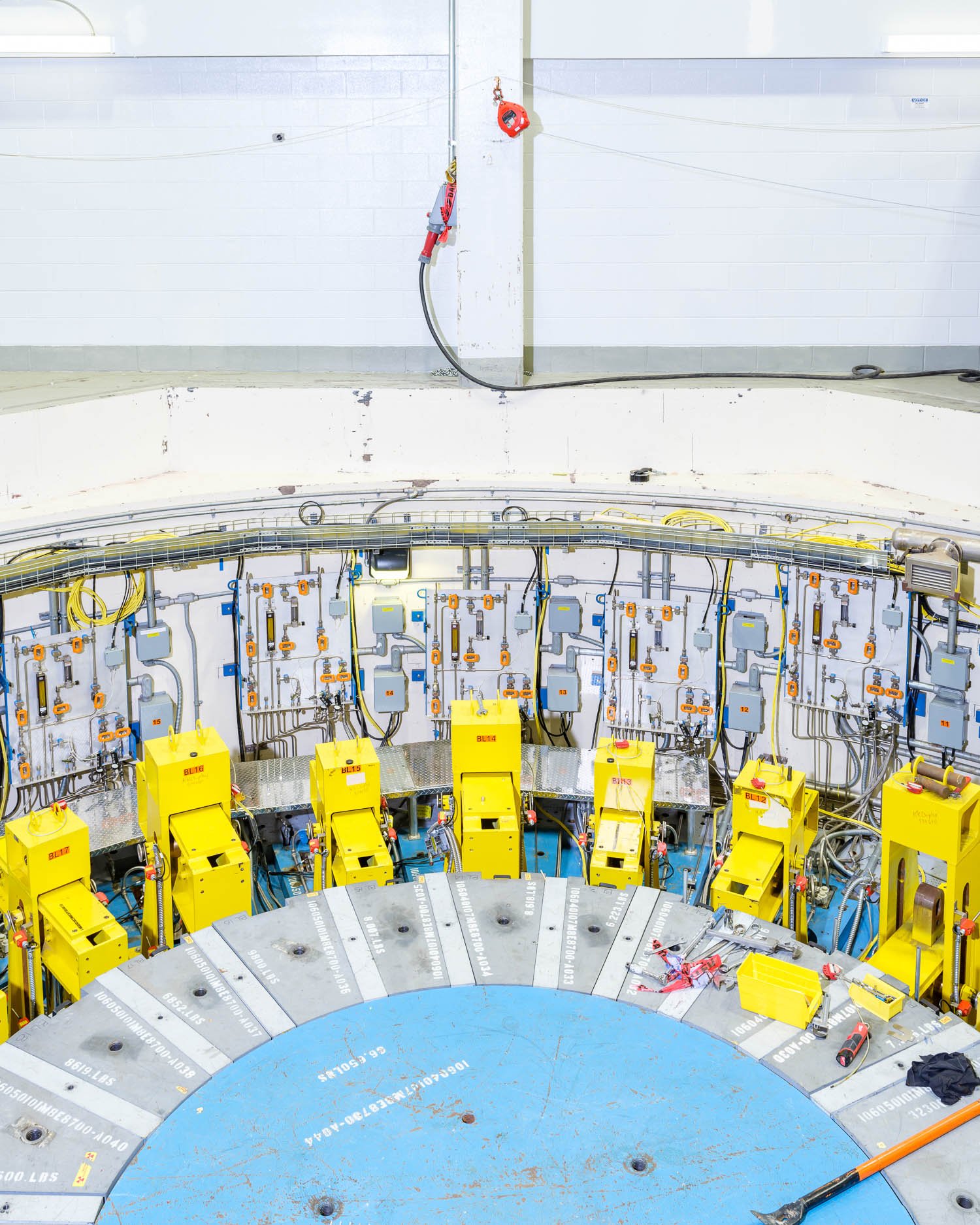
Part of the Spallation Neutron Source particle accelerator
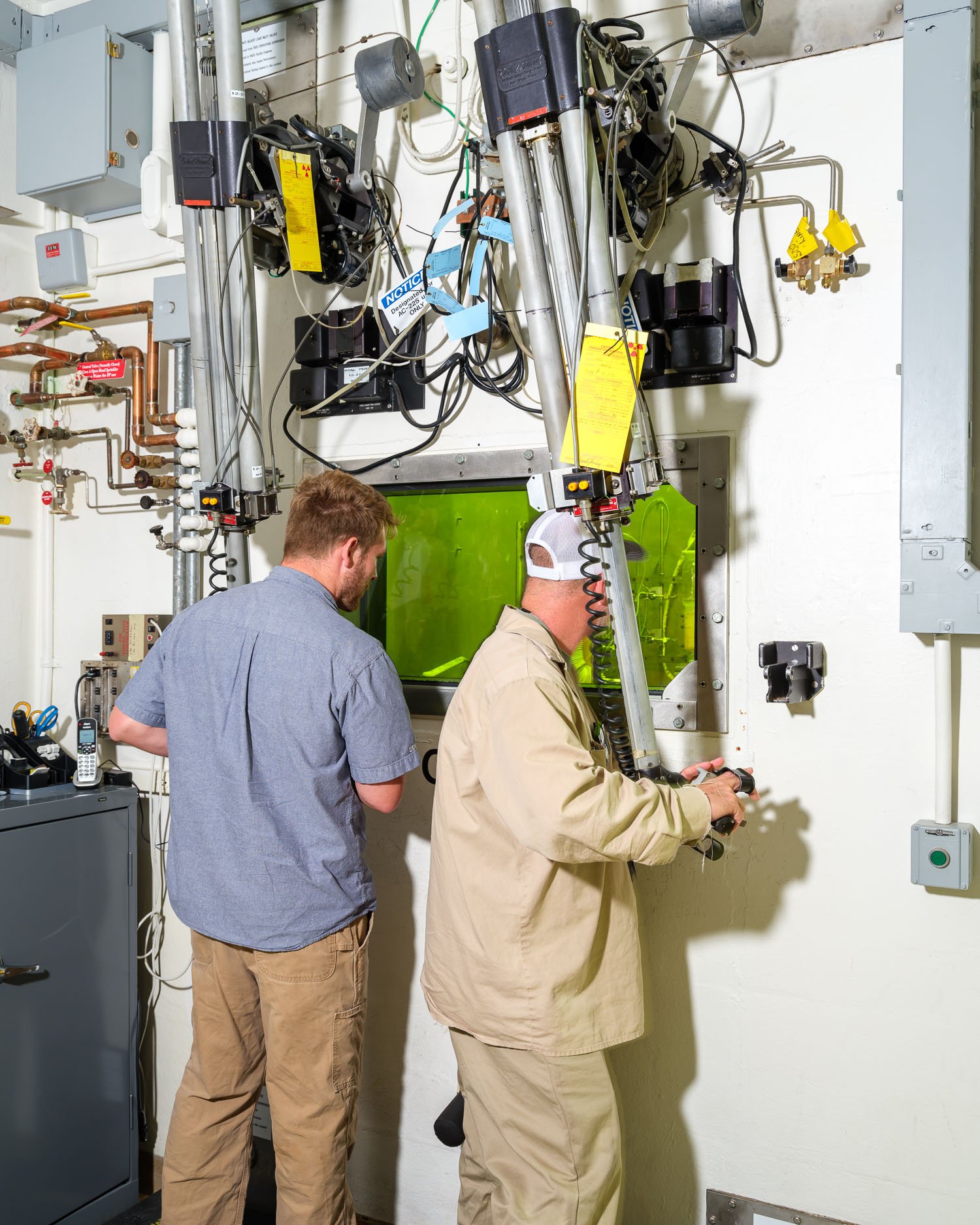
Hot cell at the the Radiochemical Engineering Development Center (REDC) at Oak Ridge National Laboratory. The REDC helps to produce isotopes, nuclear fuels, and other materials. Here, two technicians work with actinium-225 using remote manipulators at the face of a hot cell. Clinical trials show actinium-225 is promising as a possible treatment for leukemia and glioblastoma.
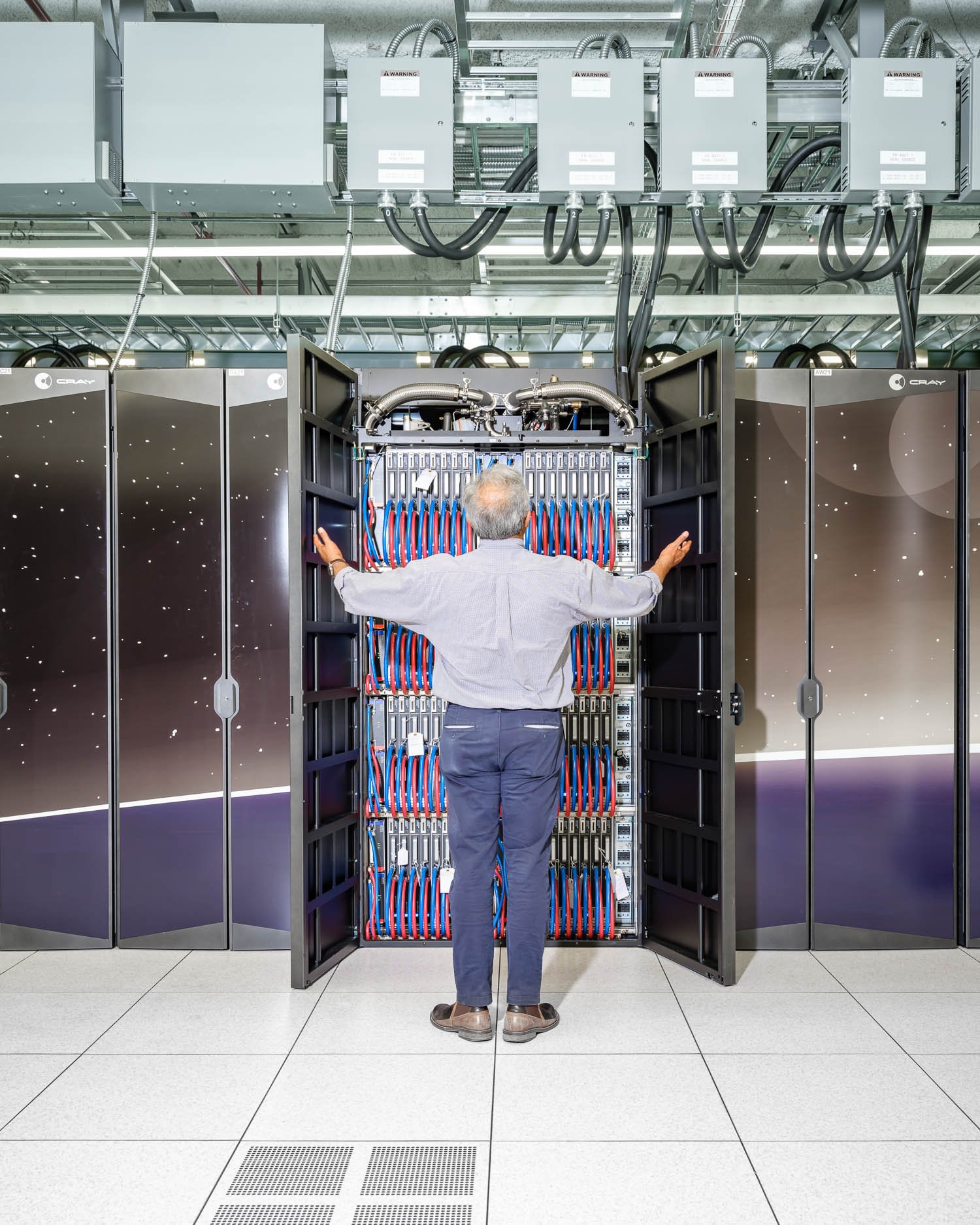
Thomas Zacharia, former director of ORNL in front of Frontier, the fastest supercomputer in the world. Frontier is also the world’s first supercomputer to break the performance barrier known as exascale, a threshold of a quintillion calculations per second. If each person on Earth completed one calculation per second, it would take four years to do what Frontier can do in one second.

Corridor at ORNL
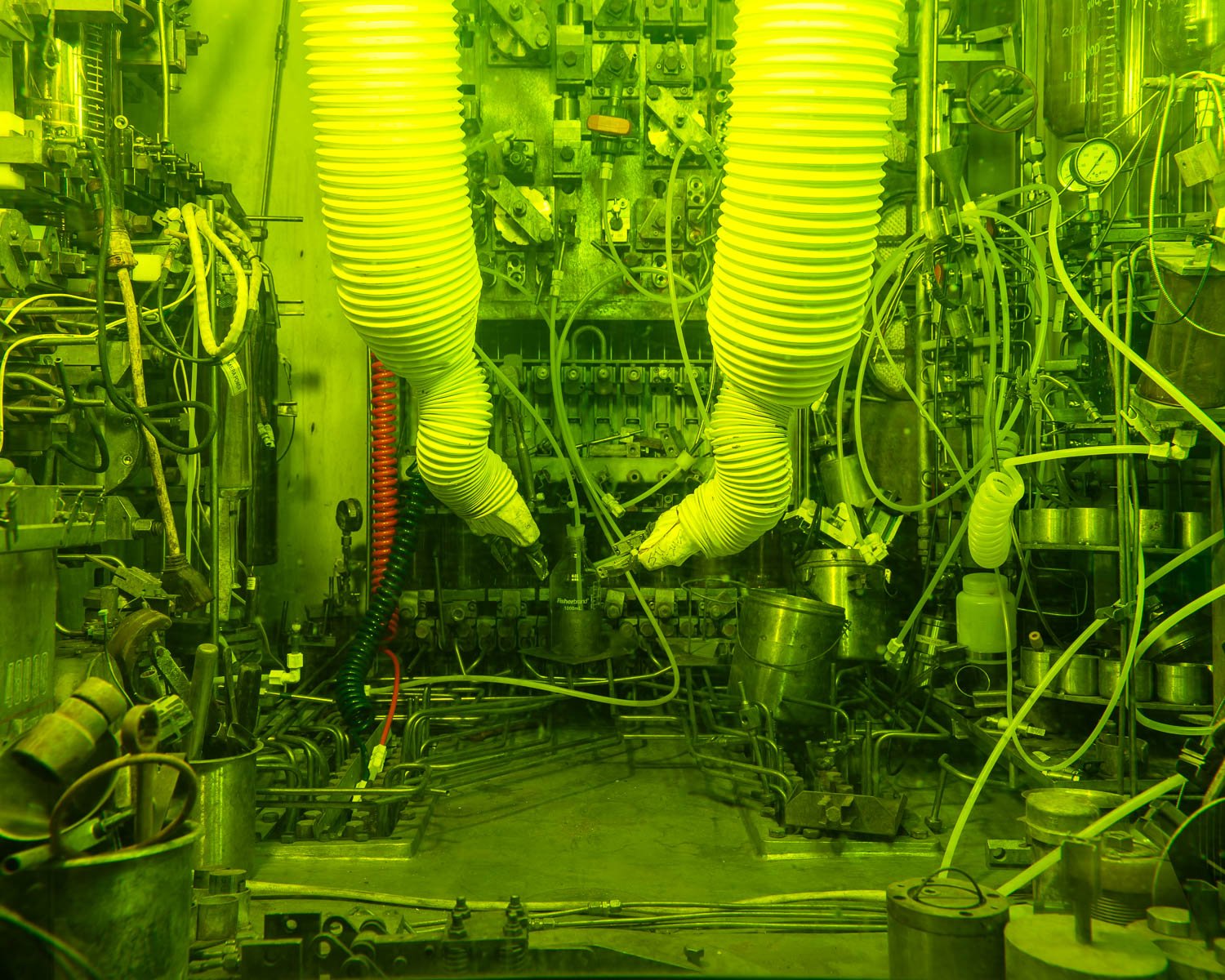
Hot cell at the Radiochemical Engineering Development Cente
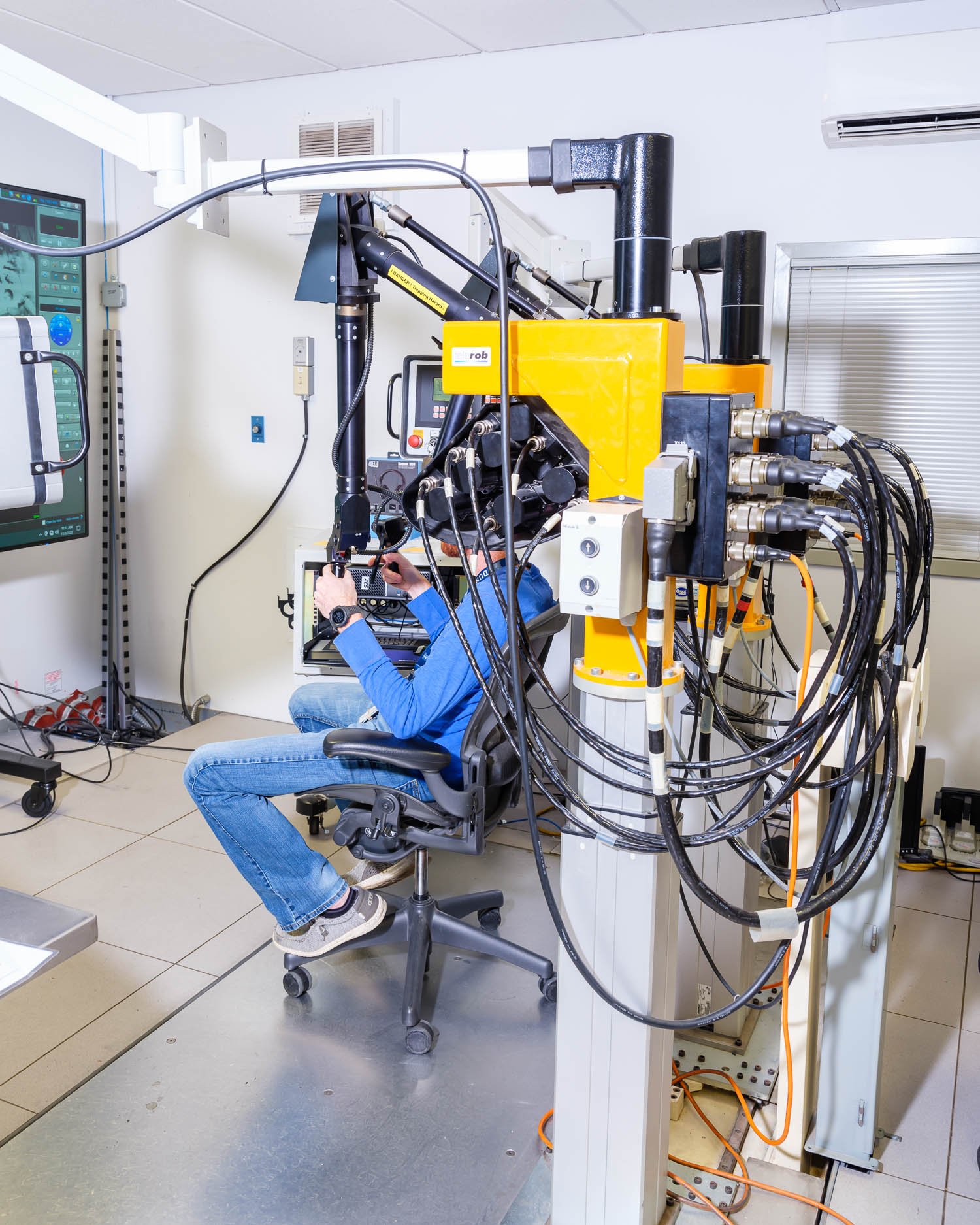
Remotely operating arms in a hot cell at the Spallation Neutron Source

Frontier consists of 74 cabinets, each holding more than a mile of cable, and will be used to enable new scientific discoveries in areas such as climate, energy, and health.
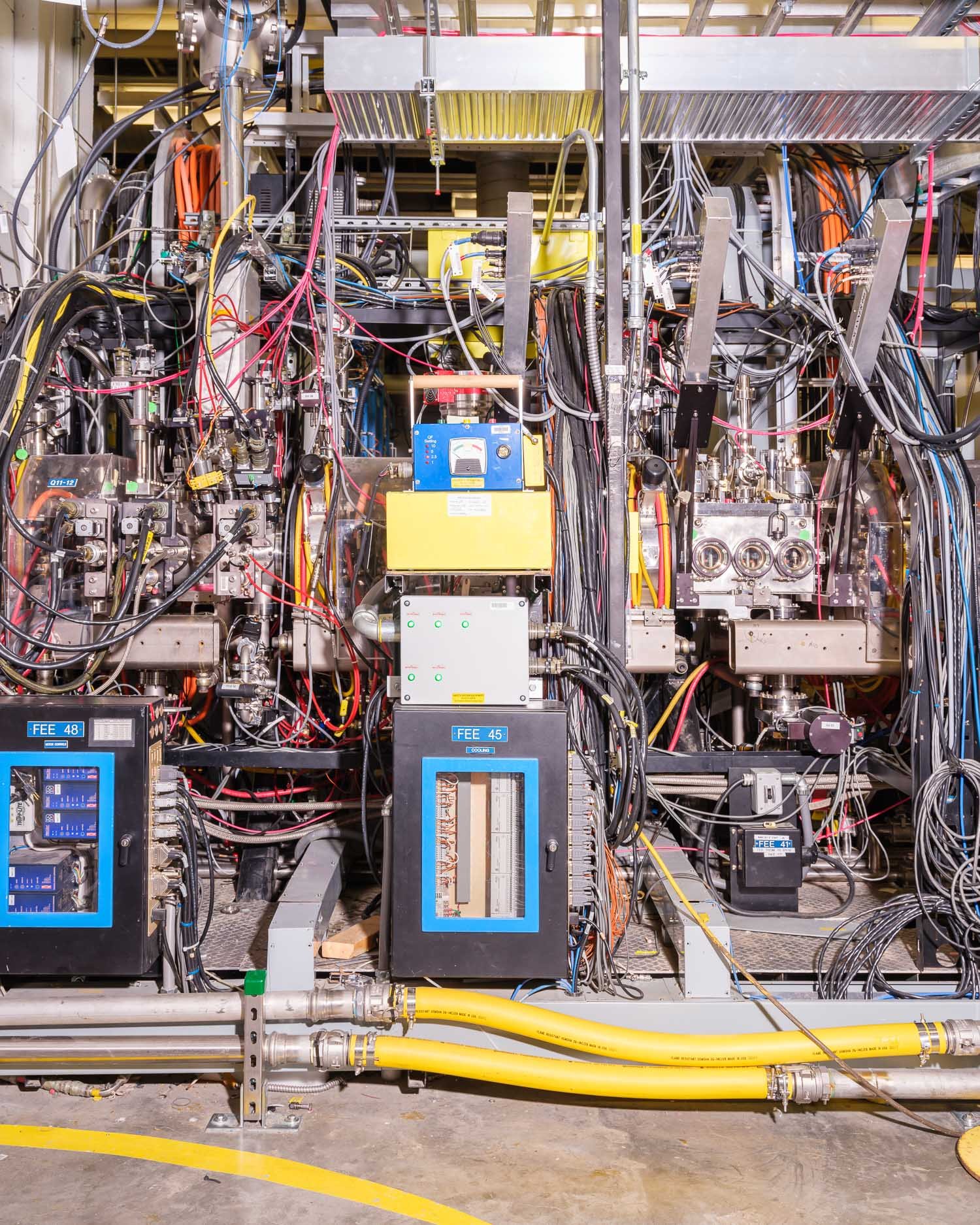
Part of the Spallation Neutron Source particle accelerator
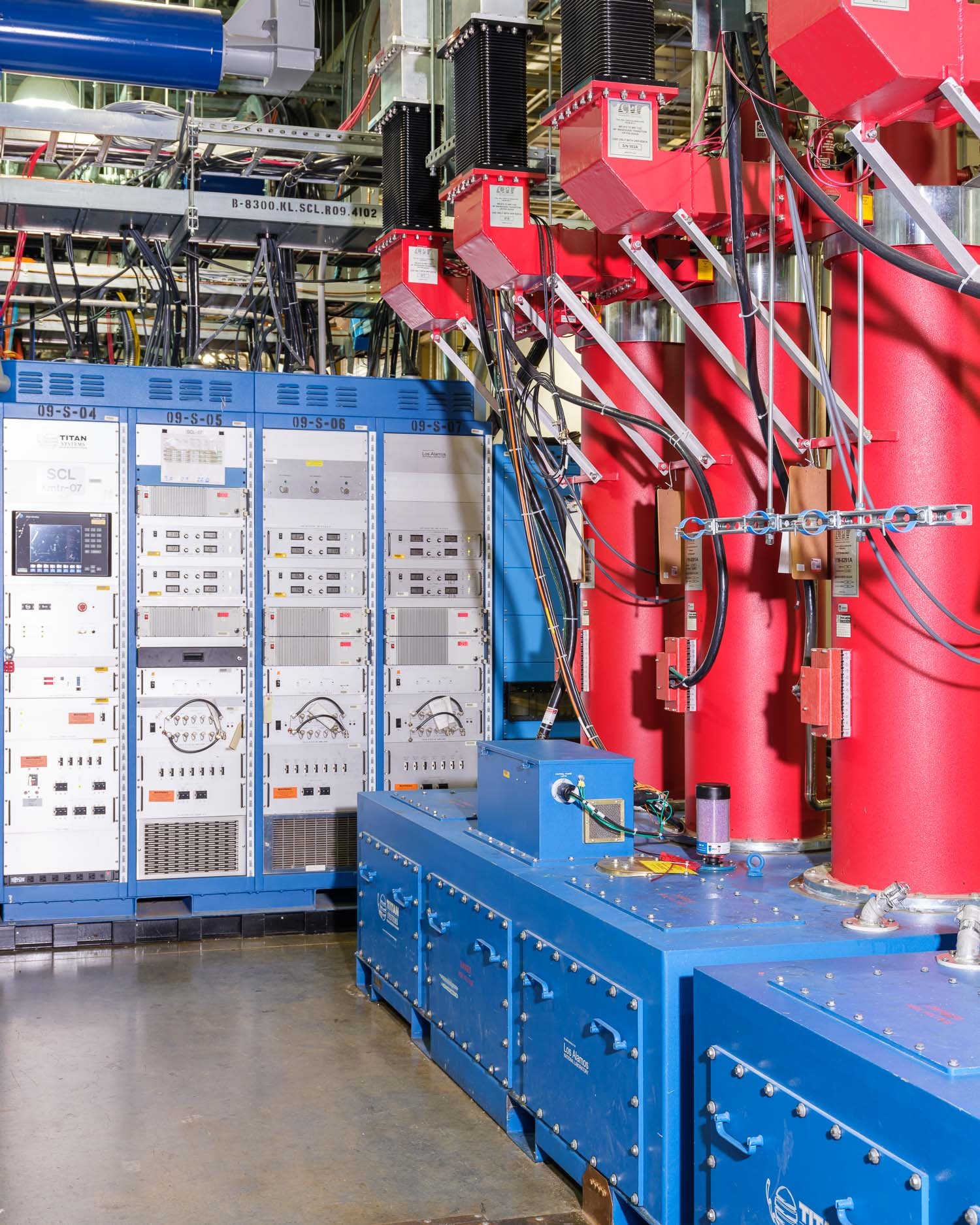
Part of the Spallation Neutron Source particle accelerator
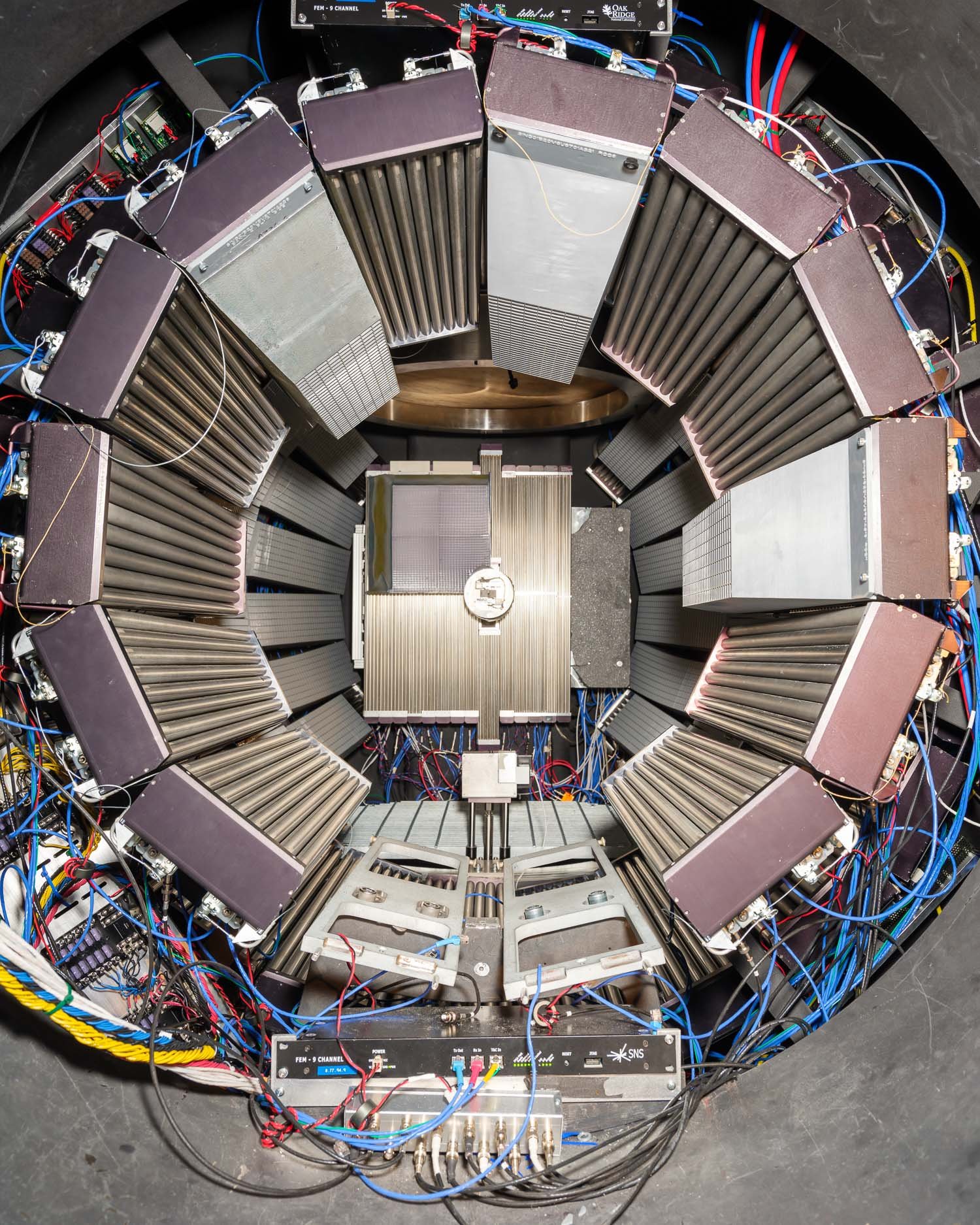
Detector at the Spallation Neutron Source particle accelerator
